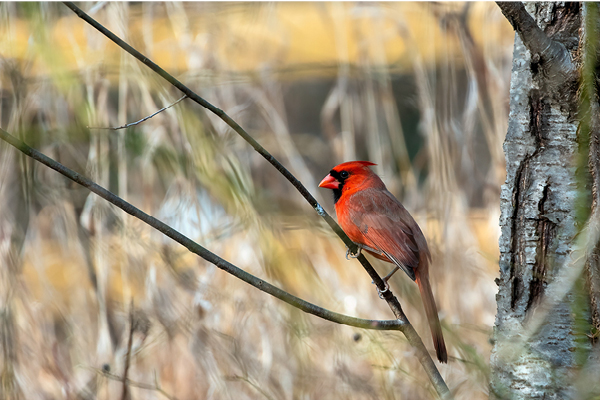Recommended Plants for Birds

Want to attract more birds to your outdoor oasis? Planting trees and shrubs not only creates a habitat for birds to thrive, but can also provide a natural food source.
TREES
- AMERICAN MOUNTAIN ASH – Attracts about 14 species, including the cedar waxwing, brown thrasher, eastern bluebird, gray catbird and evening and pine grosbeaks that eat the fruit.
- DOWNY SERVICEBERRY – Attracts at least 19 species that eat the fruit of serviceberry plants, including the hairy woodpecker, wood thrush, ruffed grouse, red-eyed vireo and rose-breasted grosbeak.
- EASTERN RED CEDAR – Attracts at least 54 species that are known to eat the fruit, including the cedar waxwing, northern mockingbird, brown thrasher and gray catbird. Also a nest site for songbirds.
- FLOWERING CRABAPPLE – Attracts a great variety of birds, including the northern flicker and white-throated sparrow, which like to eat the small fruits.
- FLOWERING DOGWOOD – Attracts 36 species that eat the fruit, including six species of thrush, the northern flicker, pileated woodpecker, summer tanager and pine grosbeaks.
- HAWTHORN – Attracts at least 18 species, especially the cedar waxwing.
- RED MULBERRY – Attracts at least 44 species including yellow and black-billed cuckoos and scarlet and summer tanagers.
- SUGAR MAPLE – Attracts the American robin and white-eyed vireo, which nest in the branches. The oriole, wren and warbler eat insects from the foliage.
- WHITE OAK – Attracts the northern flicker, redheaded woodpecker, blue jay and others that eat the acorns.
SHRUBS
- AMERICAN CRANBERRY BUSH – Attracts at least 7 species that eat the fruit including the spruce and ruffed grouse, wild turkey, brown thrasher, cedar waxwing and eastern bluebird.
- AMERICAN ELDERBERRY – Attracts at least 33 species to its fruit including the red-bellied and redheaded woodpeckers, eastern bluebird and cardinal. The robin often eats the fruit before it is ripe.
- BRAMBLES – Attracts at least 49 species that eat the fruit including the wild turkey, blue jay, gray catbird, veery, cedar waxwing, yellow-breasted chat and orioles.
- COMMON SPICEBUSH – Attracts migrants as well as resident birds such as bobwhite and flickers.
- HIGH BUSH BLUEBERRY – Attracts the robin, eastern bluebird, orchard oriole and at least 34 other species whose preference is for the blue-black fruit.
- NANNYBERRY – Attracts at least the five species that use the dense foliage for cover. The gray catbird, robin, eastern bluebird and cedar waxwing are a few that eat the fruit.
- NORTHERN BAYBERRY – Attracts at least 25 species, including the yellow-rumped warbler, red-bellied woodpecker and tree swallow that eat the fruit. An important food source for migratory birds.
- PAGODA DOGWOOD – Attracts at least 34 species with its fruit including the downy woodpecker, brown thrasher, wood thrush, bluebird and cedar waxwing.
- RED-OSIER DOGWOOD – Attracts at least 18 species that eat the fruit, including the wild turkey and catbird. It is an important shrub for songbirds because of its dense cover.
- STAGHORN SUMAC – Attracts some ground-nesting birds. At least 21 species eat the fruit including the red-eyed vireo and robin.
- WILD ROSE – Attracts at least 20 species, which enjoy the rose hips that appear in late summer.
- BEARBERRY – Attracts the fox sparrow and grouse, which eat the berries.
- COWBERRY – Attracts the white-throated sparrow, which eat the fruit. Mountain cranberry makes good groundcover.
